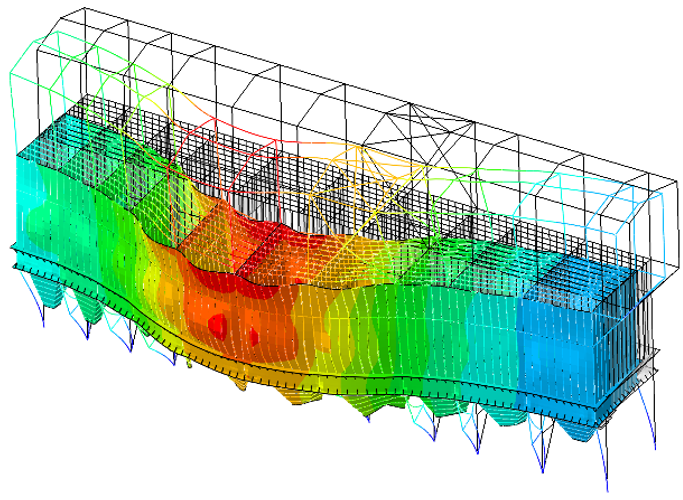Earthquakes cause in industrial countries induced by an increase in urbanisation, settlement and industrialisation in highly exposed regions as well as by an increasing vulnerability and capital intensiveness of modern technologies more often economic damages. On the other hand, the developing countries claim many victims because of weak constructions. The main reason both for the financial losses and for the victims lies in construction collapse caused by the wrongly designed and non-earthquake-resistant engineered buildings.
At the CWE the involved institutes work on covering the whole functional chain of earthquakes starting with the origin of the seismic event and the dispersion of the waves in the subsoil along with the dynamic interaction between the ground motion and different types of structures and the estimation of the consequences of a structural failure. Here the cooperation between geophysicists, geologists and civil engineers is of high significance. The priority research areas of the CWE are:

- Soil-structure interaction
- Seismic calculation and design approach
- Retrofitting, isolation and damping measures
- Vulerability examination and scenarios of structural failure
- Seismic analysis of special structures
- New materials in the earthquake engineering
Specific developments in the above-mentioned research areas generate new methodical approaches with a new range of new approaches for the earthquake resistant construction of civil structures. A special focus lies on the analysis of special structures with a high security standard, i.e. industrial plants, barrages, power stations, pipework systems or infrastructural important structures, for which very often no practice-oriented design concepts are available. With the Chair of Structural Analysis and Dynamics and the Chair of Steel Constructions the CWE consists competent and well-established partners with extensive experiences in the seismic construction of special buildings.

Another challenge for the CWE is the evaluation of the seismic vulnerability of existing structures with the goal to efficiently plan improvement measures and to be able to estimate possible damage consequences in an event of a disaster. Similar evaluations are becoming more and more important in Europe because the earthquake actions that have to be considered have increased with new seismologic findings.
Furthermore, the research at the CWE seeks to find new solutions with innovative materials to improve seismic characteristics and to investigate the seismic resistance of modern high thermal insulating products (i.e. filled hollow tiles) with experiments and simulations.
